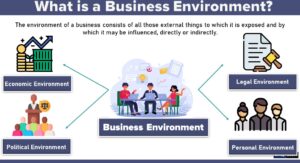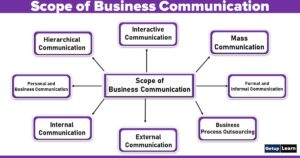In a business environment, it is very important that the people associated with the business know about the concepts of the trademark, patents etc. The patents and trademarks need to be protected legally. We need to understand the measures in the Indian legal system for the protection of patents and trademarks.
In this article, we are going to understand the concepts of patents and trademarks, and we shall try to understand the various measures for the prevention of the use of fraudulent trademarks.
Table of Contents
What is the Meaning of Patent?
A patent means the legal protection granted for a new invention for your ideas. It is an exclusive right and a legal document given by the government of a sovereign state to make, use or sell the patented product/process for a specified period of time.
The patent helps in recovering the cost of the invention which is quite substantial in many cases and thereby making profits. In addition to giving the right to the patent holder, the system of granting patents helps the development of the society also. It helps in encouraging research and competition. This is essential for the well-being of society.
Patents Protection in India
Patent protection in India was introduced in the 18th century. It has a long history. Formally patent protection in India came along with the enactment of the Patents Act 1970.
The Indian Patents Act, 1970 as amended and effective from January 1, 2005, lays down the following among others.
- Eligibility, Procedures and Conditions for the Grant of Patents
- Inventions and Other Subjects not Patentable
- Rights and Obligations of a Patentee
- Working of Patent
Eligibility, Procedures and Conditions for the Grant of Patents
According to the Act, an invention means a new product or process involving an inventive step and capable of industrial application. An inventive step requires technical advance as compared to existing knowledge or economic significance or both which makes the invention not obvious.
Inventions and Other Subjects not Patentable
Inventions which are contrary to the public interest, a mere scheme or a rule or a method or a method of playing the game, duplication of traditionally known components etc. are not patentable under the Act.
Rights and Obligations of a Patentee
The Patents Act normally prevents third parties from making, using, selling or importing the patented production or process without the consent of the patentee.
Working of Patent
A patent is granted after careful consideration of several factors. Working of patent means that the patented product is produced in the country itself and is made available at reasonable prices and within a reasonable time.
What Do You Mean by Trademark?
A trademark is a brand or part of a brand that is given legal protection because it is capable of exclusive appropriation. A trademark protects the sellers’ exclusive rights to use the brand name and/or brand mark.
Or you can understand the trademark as a sign, symbol, design, graphics, words or a combination of these that one can use to distinguish the goods and services of one manufacturer or service provider from those of others, is known a trademark. It can be represented graphically in the form of a logo or a signature. A registered trademark must be
- Distinctive instead of descriptive
- A fixed to the item sold
- Registered with the appropriate authority to obtain legal ownership and protection rights.
- Must be renewed after a fixed period of time.
There is another definition given by the Trade Marks Act 1999, Which states that a trade mark means a mark capable of being presented graphically and which is distinct from those of others.
Prevention of Use of Fraudulent Trademarks
The Trade Marks Act has provisions for the prevention and use of fraudulent trademarks. Some of the provisions regarding false trade description, falsifying a trademark, false application etc. are stated below.
False Trade Description
The Trade Mark Act 1999 defines ‘False trade description’. False trade descriptions may be interpreted in the following situations among others.
- A trade description which is untrue or misleading in a material respect as regards the goods or services to which it is applied.
- Any alteration of a trade description as regards the goods and services to which it is applied, whether by way of addition, effacement or otherwise, where that alteration makes the description untrue or misleading in a material respect.
Falsifying a Trademark
A person shall be considered to falsify a trademark in either of the following two conditions:
- Without the assent of the proprietor of the trade nearly makes that trademark or a deceptively similar mark
- Falsifies any genuine trade mark, whether by alteration, addition, effacement or otherwise.
Falsely Applying for Trademarks
A person shall be considered to falsely apply to goods a trademark who, without the assent of the proprietor of the trademark:
- Applies for such trademark or a deceptively similar mark, to goods or any package containing goods
- Uses any package bearing a mark which is identical with or deceptively similar to the trademarks of such proprietor, for the purpose of filling, packing or wrapping therein any goods other than the genuine goods of the proprietor of the trademark.
FAQ
What is the meaning of a Patent?
A patent means the legal protection granted for a new invention for your ideas. It is an exclusive right and a legal document given by the government of a sovereign state to make, use or sell the patented product/process for a specified period of time.
What are Trademarks?
A trademark means a mark capable of being presented graphically and which is distinct from those of others. Or a trademark is a brand or part of a brand that is given legal protection because it is capable of exclusive appropriation. It protects the sellers’ exclusive rights to use the brand name and/or brand mark
What are the important provisions of the Indian Patents Act, 1970 as amended and effective from January 1, 2005?
The Indian Patents Act, 1970 as amended and effective from January 1, 2005, lays down the following among others.
1. Eligibility, Procedures and Conditions for the Grant of Patents
2. Inventions and other subjects not patentable
3. The Act normally prevents third parties from making, using, selling or importing the patented production.
4. Working on a patent means that the patented product is produced in the country itself and is made available at reasonable prices and within a reasonable time.
Which conditions are needed to be an invention to be patentable
An invention to be patentable must satisfy some conditions as follows:
(a) It has to be new
(b) It has to be useful to society
(c) It has to be non-obvious to a person possessing an average skill in the art.




